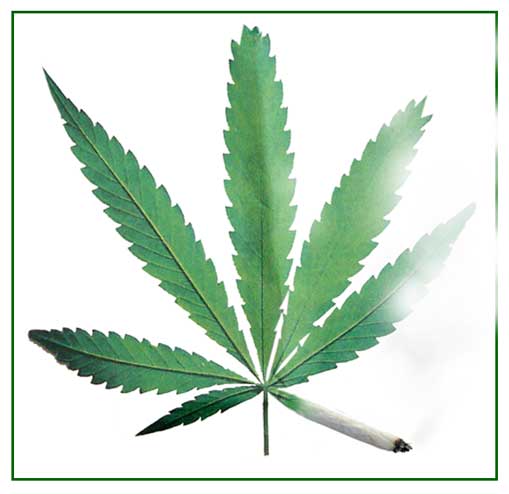![]()
 |
||||||||
The Case for Medical Marijuana |
||||||||
A Point of View |
||||||||
Godofredo U. Stuart, Jr., M.D. |
||||||||
While it is a milestone endorsement, the legalization of medical marihuana still faces major hurdles along the path of approval. Senator Sotto, one of the formidable critics of the bill, has already declared: "it is dead in the water." Despite the death knell pronouncement of Senator Sotto's on the legalization bill, the battle for legalization continues to forge forward. Duterte's endorsement--I cannot deny the Filipino people the benefits of medical marihuana---if it's not a "joke only" announcement---is a powerful war cry. He can help muscle it through the political barriers in Congress. Other professionals--doctors, lawyers, politicians, artists and musicians, and there are many--can talk from experience or informed conviction of the comparatively benign nature of marihuana, short-term or long-term, especially when compared to all other recreational drugs, including alcohol.
Safest in any top 10 list of Zero-overdose has been boasted with unbelievable numbers by various studies: (1) The lethal dose of marijuana is about one-third of body weight or about 1,500 pounds, consumed all at once. (2) The non-fatal consumption of 3000 mg/kg of THC by monkey or dog is comparable to a 154-lb human eating 46 lbs (21 kg) of 1% marijuana or 10 lbs of 5% hashish at one time. (3) A 154-lb human smoking 3 lbs (1.28 kg) of marijuana or 250,000 times the usual smoked dose. These incredible numbers make claims of safety---one that cannot be made by any common psychoactive agents including alcohol and barbiturates. (Phillips et al. 1971, Brill et al. 1970) (13) Zero overdose? Rising Cardiovascular Events
In the Philippines, PDEA lists shabu as the most abused drug, followed by marihuana, ecstasy, and solvents. (6) The list does not include alcohol as an abused recreational drug. It was the scourge of shabu that triggered Duterte's brutal war on drugs. Marihuana got caught in the crosshair. That Duterte endorsed it for medical use speaks of his conviction on its safety and potential for medical use. Comparing marijuana with shabu is ridiculous --- but if needs be, in comparative sidewalk lingo, shabu causes aggression, violence, loss of appetite and weight loss, while marijuana causes chilling out, relaxation, munchies, and weight gain. Hands down, marihuana is a far-cry safer than all other recreational drugs, including alcohol. In most cultures and all corners of the world, recreational drugs have become an essential part of socialization, of man's voyage of exploration, his search for repose, his need to unwind. Ancient and aboriginal cultures are rife with love potions, hallucinogens, anxiolytics, and stimulants from leaves, seeds and flowers of plants. Modern recreational needs invented synthetics and analogs and a menu of other designer drugs. Reaching that state of high, bliss, or euphoria has become part of the human condition. Even in the Philippines, our forests are rich with natural stimulants and hallucinogens of seeds, leaves, and flowers, known in the boondocks and by the mountain folk. The culture of recreational marihuana was here long before shabu gained inroads into culture of drugs. In the Philippines—the niche indulgence of the burgis and the literati, artists and musicians. In the U.S. marihuana gained outlaw status, not because of crime, violence, overdoses or deaths associated with its use, but, rather, because it was the counter-culture herb, the drug that fueled the decade of protests by flower-children with their ideals promoting love and peace. Even with laws that criminalized it, marihuana became the most popular staple drug for socializing. With de-scheduling and decriminalization, marihuana has become an acceptable social fare--a de rigueur indulgence--to provide the familiar buzz, to fuel many social encounters, and for many, to provide that creative state of mind, sine qua non for many personal creative endeavors and eurekas. Despite the war on drugs in the Philippines, the underground marijuana culture and commerce is alive and well, serving the market of recreational use, as well as medicinal needs, by-passing the burdensome bureaucracy of applying for compassionate use. Certainly a late-comer in Philippine medicine, marihuana should not be denied its medicinal potential. Rather than just a buzz or a high or chilling out, why not relieve pain and the many discomforts of disease and maladies of aging. Guerir quelquefois, soulager souvent, consoler toujours. To cure occasionally, relieve often, console always: Both tenet and maxim, it guides many in their practice of medicine. Marihuana does not claim to cure (yet) but it can prevent sometimes, and relieve often. More studies? What don't we know about it that will be answered by doing more studies in this country? Marijuana might be the most studied plant on Earth. As of 2010, there have been over 20,000 published studies and reviews in scientific literature pertaining to marijuana and its active compounds. (8) And, without a doubt, since then, many thousands more. There is already extensive evidence of benefits for palliative and compassionate use by patients with grave illnesses, the terminally ill, the elderly, and patients with AIDS and its potential benefits for chronic pain, spasticity, glaucoma, anorexia and nausea, seizure disorders, and a myriad of other diseases. We are awash with the science and studies. Even the church, surprisingly, has expressed support on the use of marijuana for compassionate use. Rather than more studies of the same, we can focus on the old and predictable problems and novel challenges legalization will bring to the forefront---production, distribution, vetting of physicians, patient monitoring, control measures, to name a few. Marijuana has been studied for use in addiction recovery treatments, to curb alcohol cravings, as alternative to prescription drugs, as substitute for more potent opiates and cocaine. Does it have a place in the alleviation of shabu addiction that afflicts millions of Filipinos, a drug that has a recidivism rate of more than 90% within a year? Perhaps, this is a worthwhile study. Perhaps, marijuana can be a step-down drug in methamphetamine addiction treatment programs to prevent relapse. That legalization of medical marijuana has come to this point of debate and possibility underscores its relative safety and potential---borne by decades of studies and safety. But despite its negative and renegade reputation, besides what studies have shown on short-term and long-term effects, marijuana is far and away much safer and more benign than any other recreational drug or addictive substance (including alcohol), causing a thousand times less disease and deaths than alcohol or tobacco smoking. On the oppositional end, legalization--if it happens--will be threatened by the black market industry of recreational marijuana with the same cast of underworld characters and drug lords of the criminal supply chain, corrupt politicians, and bribing law-enforcement scalawags. Even the user-end of it is a veritable hornet's nest of unethical physicians, tweaked diagnoses, prescription abuse, and non-patient or pass-on use. Legalization of medical marijuana will see an increase in recreational use. Yes, for some, I believe, it will be a gateway drug. Yes, for some it will be addicting. While marijuana boasts of zero deaths from overdose, its use has undoubtedly contributed to vehicular accidents and, perhaps, deaths, especially when combined with moderate alcohol consumption. The risk associated with marijuana in combination with alcohol appears to be greater than that for either drug by itself. Epidemiologic data show the risk of involvement in a motor vehicle accident increases approximately 2-fold after cannabis smoking. Recent smoking and/or blood THC concentrations 2-5 ng/mL has been shown to be associated with substantial driving impairment. (7) Vehicular accidents associated with its use---and especially when used with alcohol---should be meted with stiff fines and driving license revocation. The bottom line is: It is effective, and Filipinos in need should not be denied its benefits. While questions and issues on safety are crucial points for continued debate, cannabis is still safer than all the other recreational drugs, including alcohol, with less toxicity than some over the counter pain-killers. Debate should be accompanied by unbiased education and dissemination of its pros and cons and risks and benefits. There will be many challenges for the think tank of politicians, physicians, and powers that be in law enforcement and regulatory agencies. October 18, 2017 |
||||||||
Also read : Marijuana / Philippine Medicinal Plants |
||||||||
by Dr Godofredo U. Stuart Jr. |
||||||||
Additional
Sources and Suggested Readings |
||||||||

 henever the legalization of medical marijuana gets bandied around, I say to myself: no way in hell. Then, from out of the blue, in the early months of his brutal war on drugs, Duterte announced: It's effective. . . I will not deprive Filipinos of the benefits of medical marijuana. . . (but) I must have a clear definition of what it is and it must be approved by the FDA.
henever the legalization of medical marijuana gets bandied around, I say to myself: no way in hell. Then, from out of the blue, in the early months of his brutal war on drugs, Duterte announced: It's effective. . . I will not deprive Filipinos of the benefits of medical marijuana. . . (but) I must have a clear definition of what it is and it must be approved by the FDA.